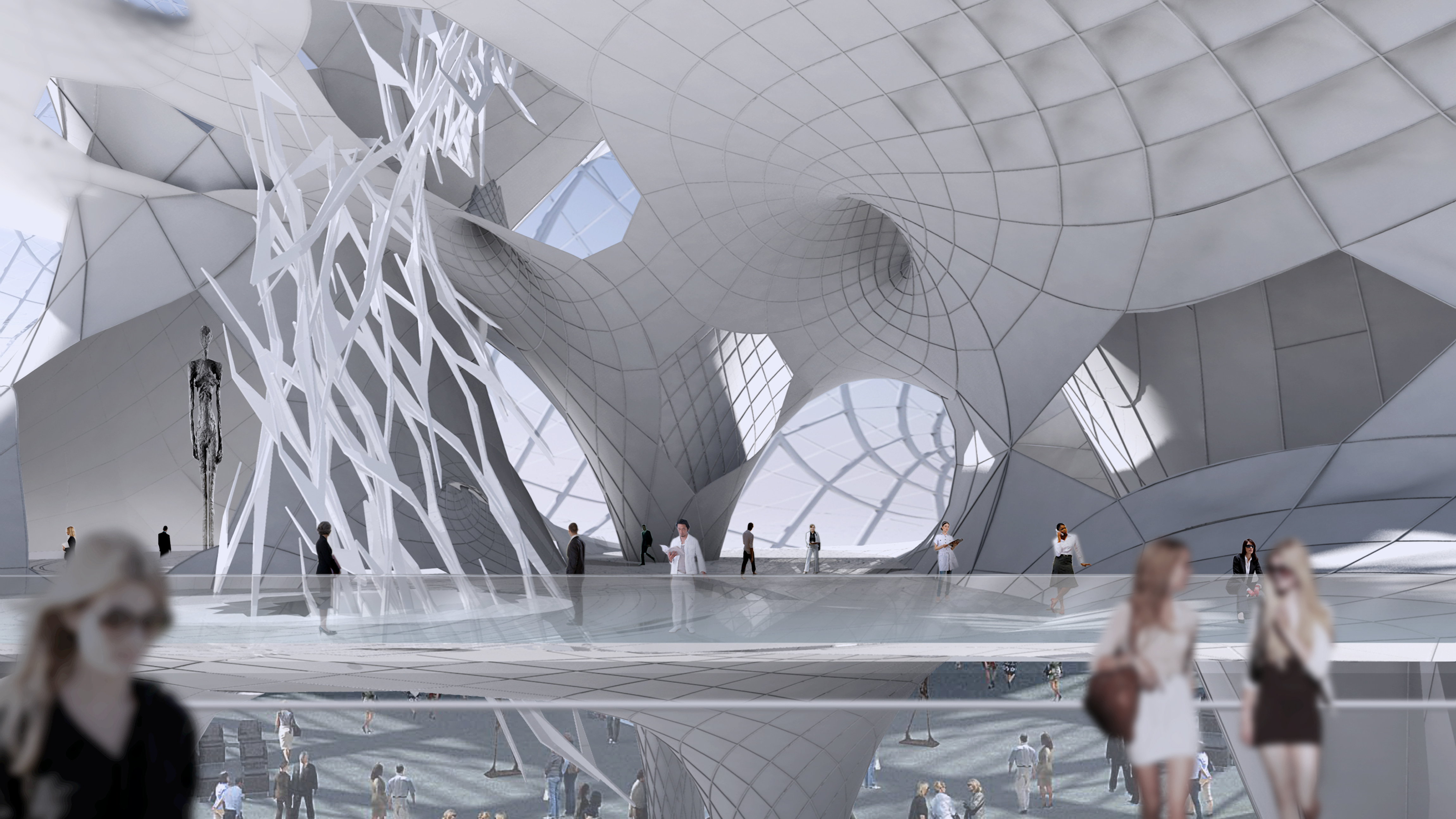hS Highy Strung
| PROJECT DATA |
|---|
| TYPE | CULTURAL |
|---|---|
| LOCATION | NEW YORK USA |
| CLIENT | SELF-INITIATED |
| DATE | 2011 |
| TEAM | IAIN MAXWELL DAVE PIGRAM TANYA BRANQUINHO |
| AWARDS | 2012 BEIJING BIENNALE |

Highly Strung
New York, USA
hS
Extending the traditions of form-finding practices in architecture through the study of force, form and organisation as inseparable conspirators in the act of architectural formation.
Highly String is a speculative vision for a museum that explores the potential of negotiation
between structural, organisational, and formal desires. This extends the formfinding trajectory of architecture, most famously deployed by Gaudi and Otto who employed material computation, by moving from the singular resolution of structural forces to a system of multiple inputs.
Highly Strung deploys a family of algorithms including dynamic relaxation (structural); quasi-electric field (formal/ornamental and organisational); and multi-agent systems (organisational) in a complex and tuneable feedback loop.
The servility of ‘form follows function’ or its opposite is replaced by a system where form and organisation are inseparable co-conspirators simultaneously engaged in the act of architectural formation.
The practice of architecture inevitably involves the resolution of competing desires. Algorithmic techniques offer the possibility of these tradeoffs becoming explicit and quantifiable negotiations as opposed to the conventional process of strategic but intuitive serial compromise. Significantly this methodology can demonstrate high volatility in the sense of generating a level of divergence between outcomes that is uncommon in other rationally driven design processes. The adoption and continued evolution of these techniques will profoundly alter the design process and its products.
The project was exhibited at the Fourth Architecture Biennial Beijing, ‘Machinic Processes’ curated by Neil Leach and Xu wei-Guo in 2010. The exhibition brought together leading examples of ‘the innovative use of new parametric and algorithmic design techniques’ as well as the use of advanced digital fabrication processes.
Diagram
Form-finding the central lobby ceiling
Form-finding the central lobby ceiling


